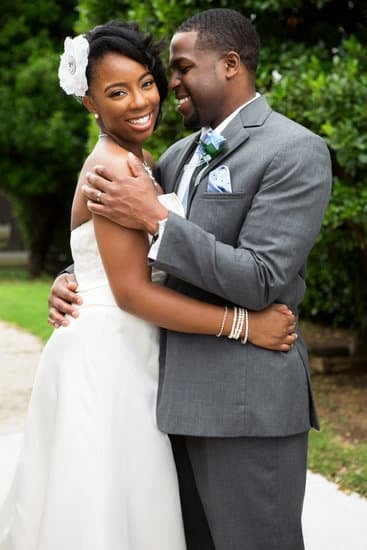The tradition of wearing both wedding and engagement rings is one that dates back for centuries, with each ring holding its own symbolic meaning. While some may wonder if it is necessary to wear both, the decision ultimately comes down to personal preference. In this article, we will explore the significance of these two rings and delve into the tradition of wearing both.
Wedding and engagement rings play important roles in the lives of couples, symbolizing love, commitment, and partnership. But what exactly is the difference between the two? Is it customary to wear both, or are there alternatives? These questions and more will be addressed as we uncover the reasons why some people choose to wear both rings while others opt for different approaches.
Throughout various cultures and religions, the customs surrounding wedding and engagement rings can vary significantly. Understanding these differences can provide insight into the significance of wearing both rings and shed light on alternative practices. From personal stories to styling tips, this article aims to provide a comprehensive overview of this timeless tradition, exploring its cultural significance and offering practical advice for those considering wearing both wedding and engagement rings.
The Tradition of Wearing Both Rings
The tradition of wearing both wedding and engagement rings is deeply rooted in many cultures around the world. These rings symbolize the love, commitment, and partnership between two people, making them an important part of any marriage. The practice of wearing both rings has been passed down through generations and continues to be a meaningful tradition for couples today.
In most Western cultures, it is customary to wear both the engagement ring and the wedding band on the fourth finger of the left hand. The engagement ring is typically worn first, closest to the heart, with the wedding band placed on top after exchanging vows. This symbolizes the transition from being engaged to being married and serves as a constant reminder of the love and promises made to one another.
While traditions vary from culture to culture, wearing both rings is seen as a public display of commitment and love. It also serves as a visual representation of the couple’s relationship status. The symbolism behind each ring holds great significance and wearing them together is a way to honor that symbolism.
| Tradition | Significance |
|---|---|
| Deeply rooted in many cultures | Symbolize love, commitment, and partnership |
| Customary in Western cultures | Worn on fourth finger of left hand |
| Public display of commitment and love | Serves as visual representation of relationship status |
The Differences Between Wedding and Engagement Rings
The main difference between wedding and engagement rings lies in their timing and significance. An engagement ring is typically given at the time of a marriage proposal, symbolizing the promise of marriage, while a wedding ring is exchanged during the wedding ceremony, signifying the official union between two people.
Generally, engagement rings are worn on the ring finger of the left hand, while wedding rings are often placed on the same finger but may be moved to the right hand after the ceremony.
Another key distinction is their design. Engagement rings often feature a single prominent stone, such as a diamond or other precious gem, and may be more elaborate in design to symbolize the uniqueness and importance of that particular moment in a couple’s relationship. On the other hand, wedding bands are usually simpler in style and may be made of gold, silver, or platinum without any additional stones or intricate details.
In addition to this, there is also a difference in cost. Engagement rings are traditionally viewed as more expensive than wedding bands due to their association with proposals and declarations of love. This fundamental contrast reflects society’s longstanding customs regarding these two distinct types of rings.
Reasons Why Some People Choose to Wear Both Rings
Some people choose to wear both their wedding and engagement rings for a variety of reasons. It is a common tradition in many cultures, but the decision ultimately comes down to personal preference. Here are some reasons why individuals may choose to wear both rings:
1. Symbolism: Both the engagement ring and the wedding band hold significant meaning and memories. The engagement ring symbolizes the promise of marriage, while the wedding band represents the actual union and commitment. Some individuals choose to wear both rings as a way to honor and showcase the different stages of their relationship.
2. Sentimental value: For many people, both the engagement ring and the wedding band hold sentimental value. Whether it’s the stone from the engagement ring or the band from the wedding ring, each piece of jewelry holds memories that they want to carry with them at all times.
3. Personal style: Some individuals simply enjoy wearing both rings as part of their personal style. They may feel that both pieces of jewelry complement each other and add an extra touch of elegance to their overall look.
At the end of the day, whether or not you choose to wear both your wedding and engagement rings is completely up to you. It’s important to consider what feels right for you personally, whether that means wearing both rings or opting for a different approach.
Alternatives to Wearing Both Rings
Some people may choose not to wear both their wedding and engagement rings for various reasons. Whether it’s practicality, comfort, or personal preference, there are several alternatives to wearing both rings that individuals may consider. Here are a few options to consider:
- Stackable bands: Some individuals opt for stackable bands that can be worn alongside their wedding ring, allowing them to switch up their look without wearing the traditional engagement ring daily.
- Wearing the rings on different hands: An alternative option is to wear the engagement ring on one hand and the wedding ring on the other. This allows individuals to still showcase both rings without wearing them together.
- Wearing the rings on special occasions: Some people choose to only wear their engagement ring on certain occasions, such as date nights or formal events, rather than wearing it daily along with their wedding ring.
There are also individuals who opt for more non-traditional options such as tattooed wedding bands or simply choosing not to wear an engagement ring at all. Ultimately, the decision of whether or not to wear both rings is a personal choice that varies from person to person.
With these alternative options in mind, it’s important for individuals to consider what works best for them and aligns with their personal style and preferences. The most important aspect is that each individual feels comfortable and confident with their choice of how they choose to display their commitment and love through their wedding and engagement rings.
Cultural and Religious Perspectives on Wearing Both Rings
In various cultures and religions, the act of wearing both wedding and engagement rings holds significant meaning. For example, in the Christian faith, the tradition of exchanging rings during the marriage ceremony symbolizes the couple’s commitment to each other.
The engagement ring represents a promise of marriage, while the wedding ring signifies the actual union or partnership. This practice is also common in Jewish weddings, where the bride receives a ring during the betrothal ceremony and then another ring during the wedding ceremony.
In Hindu culture, it is customary for a woman to wear her engagement ring on her right hand and then move it to her left hand during the wedding ceremony. This change in placement symbolizes her transition from being single to being married. Similarly, in Muslim traditions, some couples choose to exchange rings during their engagement period as a symbol of their commitment before officially becoming married.
The cultural and religious perspectives on wearing both rings vary across different societies and belief systems. While some individuals place great importance on following these traditions, others may choose to modify or adapt them based on personal preferences and modern influences.
The decision to wear both wedding and engagement rings is ultimately a personal one that can be influenced by cultural or religious beliefs. Depending on individual values and customs, couples may choose to embrace or adjust these traditions as they see fit for their relationship.
How to Style Both Rings Together
When it comes to wearing both wedding and engagement rings, styling them together is an important consideration. Many people wonder how to wear both rings in a way that is aesthetically pleasing and comfortable. There are several tips and tricks for styling both rings together to create a cohesive and beautiful look.
Consider the Design of Each Ring
One important aspect to consider when styling both rings together is the design of each ring. If your engagement ring has a large center stone or intricate details, you may want to choose a simple and understated wedding band to pair with it. On the other hand, if your engagement ring is more simplistic, you may want to opt for a wedding band with added details or embellishments to create balance.
Stacking vs. Separate Fingers
Another consideration when styling both rings together is whether to stack them on the same finger or wear them on separate fingers. Some people prefer the look of stacked rings, while others find it more comfortable to wear their wedding band on a different finger. Ultimately, the decision will depend on personal preference and comfort.
Seek Professional Advice
If you’re unsure about how to style your wedding and engagement rings together, consider seeking advice from a professional jeweler. They can provide valuable insight and suggestions based on the specific design and fit of your rings. Additionally, they may be able to offer custom solutions, such as creating a custom-designed wedding band that complements your engagement ring perfectly.
Styling both wedding and engagement rings together is a personal choice, and there is no one-size-fits-all approach. By considering the design of each ring, deciding whether to stack or wear them separately, and seeking professional advice if needed, you can create a cohesive and stylish look that reflects your personal taste and preferences.
Personal Stories and Experiences From People Who Wear Both Rings
Wearing both wedding and engagement rings is a tradition that holds deep significance for many people. While some individuals choose to only wear their wedding band after getting married, others opt to continue wearing both rings as a symbol of their commitment and love. Personal stories and experiences from individuals who wear both rings reveal the various reasons behind this choice.
Symbol of Love and Commitment
For many people, wearing both the engagement ring and the wedding band serves as a constant reminder of the love and commitment shared with their partner. The engagement ring signifies the promise of marriage, while the wedding band represents the lifelong commitment made during the marriage ceremony. Together, these rings serve as a visual representation of the enduring love and devotion within the relationship.
Sentimental Value
Some individuals choose to continue wearing both rings due to sentimental reasons. The engagement ring may hold special memories or emotional significance, such as being passed down through generations or having been received during a memorable proposal. Wearing both rings allows individuals to carry these meaningful sentiments with them in their daily lives.
Respecting Tradition
In certain cultures and traditions, it is customary for individuals to wear both wedding and engagement rings throughout their marriage. This practice reflects respect for cultural customs and traditions, as well as an acknowledgment of the symbolism attached to each ring. Many people choose to honor these traditions by wearing both rings as a sign of respect for their heritage.
These personal stories and experiences provide valuable insight into why some individuals choose to wear both wedding and engagement rings. It is evident that this decision is deeply personal and varies based on individual preferences, sentimental value, cultural influences, and traditional beliefs. Ultimately, whether or not one chooses to wear both rings is a deeply personal choice that reflects their unique circumstances and values.
Conclusion
In conclusion, the decision to wear both wedding and engagement rings is a personal choice that varies from person to person. While tradition may dictate wearing both rings, some individuals may choose alternative options or only one ring for various reasons. The differences between wedding and engagement rings, as well as cultural and religious perspectives, also play a role in the decision-making process.
For many people, wearing both wedding and engagement rings holds sentimental value and symbolizes the commitment and love shared with their partner. Some may opt to wear both rings as a way to honor tradition and showcase their relationship status, while others may choose not to wear one or both rings due to personal preferences or practical reasons.
Ultimately, it is important to remember that there is no right or wrong answer when it comes to wearing wedding and engagement rings. Each individual should make this decision based on their own beliefs, cultural background, and personal style. Whether you choose to wear both rings, just one of them, or explore alternative options, the most important thing is that your choice reflects your own values and what holds significance for you and your partner.

I have been involved in marriages for over 20 years helping couples and singles understand more about them.





